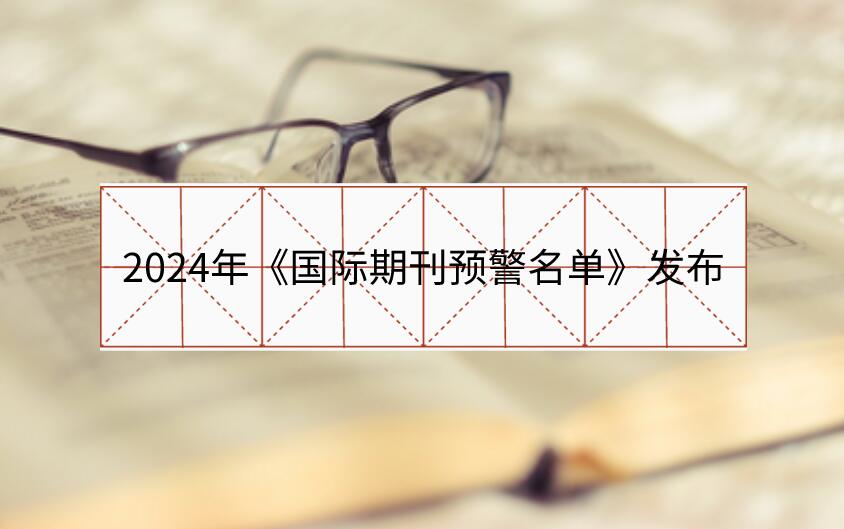期刊VIP學術指導 符合學術規范和道德
保障品質 保證專業,沒有后顧之憂
期刊VIP學術指導 符合學術規范和道德
保障品質 保證專業,沒有后顧之憂
《Nature》雜志專訪了預警期刊負責人楊立英研究員,向全球科學家報道了預警期刊的最新變化。
《中國有一份涉嫌期刊名單,最新已更新》一文深入探討了這份全球影響深遠的預警期刊名單的由來、研制過程,并著重關注了今年名單的新變化——對于具有“引用操縱”等不端行為的期刊以及與“國際傳播作用”背道而馳的期刊進行了明確標記。

以下是采訪主要內容的節選:
【名單背后的機制】
我們首先收集來自中國研究人員和管理者的反饋,并跟蹤全球關于新形式學術不端行為的討論,以確定要關注的問題。一月份,我們分析了來自倫敦Clarivate出版分析公司提供的Web of Science科學引文數據庫的原始數據,并準備了初步的期刊名單。我們與相關出版社分享這份名單,并解釋他們的期刊為何可能被列入名單。
We start by collecting feedback from Chinese researchers and administrators, and we follow global discussions on new forms of misconduct to determine the problems to focus on. In January, we analyse raw data from the science-citation database Web of Science, provided by the publishing-analytics firm Clarivate, based in London, and prepare a preliminary list of journals. We share this with relevant publishers, and explain why their journals could end up on the list.
Sometimes publishers give us feedback and make a case against including their journal. If their response is reasonable, we will remove it. We appreciate suggestions to improve our work. We never see the journal list as a perfect one. This year, discussions with publishers cut the list from around 50 journals down to 24.
【預警標記透明化,預警類別動態更新,提供負責任的科學參考】
過去幾年,期刊被劃分為高風險、中風險和低風險。今年,我們沒有報告風險水平,因為我們刪除了低風險類別,同時我們也意識到中國研究人員會忽略風險分類,直接避開名單上的期刊。因此,我們改為提供期刊被列入名單的具體原因的解釋。
在過去的幾年中,我們包括了出版數量迅速增長的期刊。例如,如果一本期刊一年發表了1000篇文章,下一年發表了5000篇,我們最初的邏輯是,這些期刊很難維持其質量控制程序。今年我們移除了這一標準。開放獲取模式的興起意味著期刊有可能收到大量稿件,因此迅速增加文章數量。我們不希望干擾市場自然過程。
In previous years, journals were categorized as being high, medium or low risk. This year, we didn’t report risk levels because we removed the low risk category, and we also realized that Chinese researchers ignore the risk categories and simply avoid journals on the list altogether. Instead, we provided an explanation of why the journal is on the list.
In previous years, we included journals with publication numbers that increased very rapidly. For example, if a journal published 1,000 articles one year and then 5,000 the next year, our initial logic was that it would be hard for these journals to maintain their quality-control procedures. We have removed this criterion this year. The shift towards open access has meant that it is possible for journals to receive a large number of manuscripts, and therefore rapidly increase their article numbers. We don’t want to disturb this natural process decided by the market.
【瞄準問題——標記出引用模式異常的期刊】
我們注意到全球科研界一直在討論此問題。我們很難斷定問題是由期刊引起還是由作者自身引起的。有時,作者團體會相互同意進行引用操縱,或使用產生虛假研究論文的論文工廠。我們通過科睿唯安提供的引文數據查找這些期刊,例如,那些稿件引用高度偏向于一期的期刊或由少數研究人員撰寫的文章。明年,我們計劃調查新形式的引用操縱問題。
We noticed that there has been a lot of discussion on the subject among researchers around the world. It’s hard for us to say whether the problem comes from the journals or from the authors themselves. Sometimes groups of authors agree to this citation manipulation mutually, or they use paper mills, which produce fake research papers. We identify these journals by looking for trends in citation data provided by Clarivate — for example, journals in which manuscript references are highly skewed to one journal issue or articles authored by a few researchers. Next year, we plan to investigate new forms of citation manipulation.
Our work seems to have an impact on publishers. Many publishers have thanked us for alerting them to the issues in their journals, and some have initiated their own investigations. One example from this year, is the open-access publisher MDPI, based in Basel, Switzerland, whom we informed that four of its journals would be included in our list because of citation manipulation. Perhaps it is unrelated, but on 13 February, MDPI sent out a notice that it was looking into potential reviewer misconduct involving unethical citation practices in 23 of its journals.
【瞄準問題——為何擔憂存在“畸形”中國論文比例的期刊】
一個國家的作者比例從來不是我們判斷一個期刊是否列入名單的獨立標準。這些期刊發表——有時幾乎全部——來自中國研究人員的文章,收取不合理高昂的文章處理費,而且被引用頻次很低。從中國的角度來看,這是一個值得關注的問題,因為我們是一個發展中國家,希望充分利用我們的科研經費,在真正的國際期刊上發表文章,為全球科學做出貢獻。如果科學家將文章發表在幾乎全部來自中國研究人員的期刊上,我們的管理者將建議將該工作提交到本地期刊。這樣,中國的研究人員可以快速閱讀和學習,而不需要支付那么多費用。這是中國科研界近年來面臨的挑戰。
This is not a criterion we use on its own. These journals publish — sometimes almost exclusively — articles by Chinese researchers, charge unreasonably high article processing fees and have a low citation impact. From a Chinese perspective, this is a concern because we are a developing country and want to make good use of our research funding to publish our work in truly international journals to contribute to global science. If scientists publish in journals where almost all the manuscripts come from Chinese researchers, our administrators will suggest that instead the work should be submitted to a local journal. That way, Chinese researchers can read it and learn from it quickly and don’t need to pay so much to publish it. This is a challenge that the Chinese research community has been confronting in recent years.
【善用數據與工具】
我們的團隊持續關注并收集各類社交媒體上的信息,以及諸如PubPeer等網站以及研究誠信博客For Better Science上的信息。目前我們不會自行進行圖像或文本檢查,但以后可能會開始進行。我們的團隊還創建了一個名為Amend的在線數據庫,記錄了一些問題文章,供研究人員查詢。我們收集文章撤稿信息、關注通知、更正和在社交媒體上被標記的文章。
My team collects information posted on social media as well as websites such as PubPeer, where users discuss published articles, and the research-integrity blog For Better Science. We currently don’t do the image or text checks ourselves, but we might start to do so later.
My team has also created an online database of questionable articles called Amend, which researchers can access. We collect information on article retractions, notices of concern, corrections and articles that have been flagged on social media.
推薦閱讀:SSCI 4區經濟類非預警期刊
如果您現在遇到期刊選擇、論文內容改善、論文投稿周期長、難錄用、多次退修、多次被拒等問題,可以告訴學術顧問,解答疑問同時給出解決方案 。